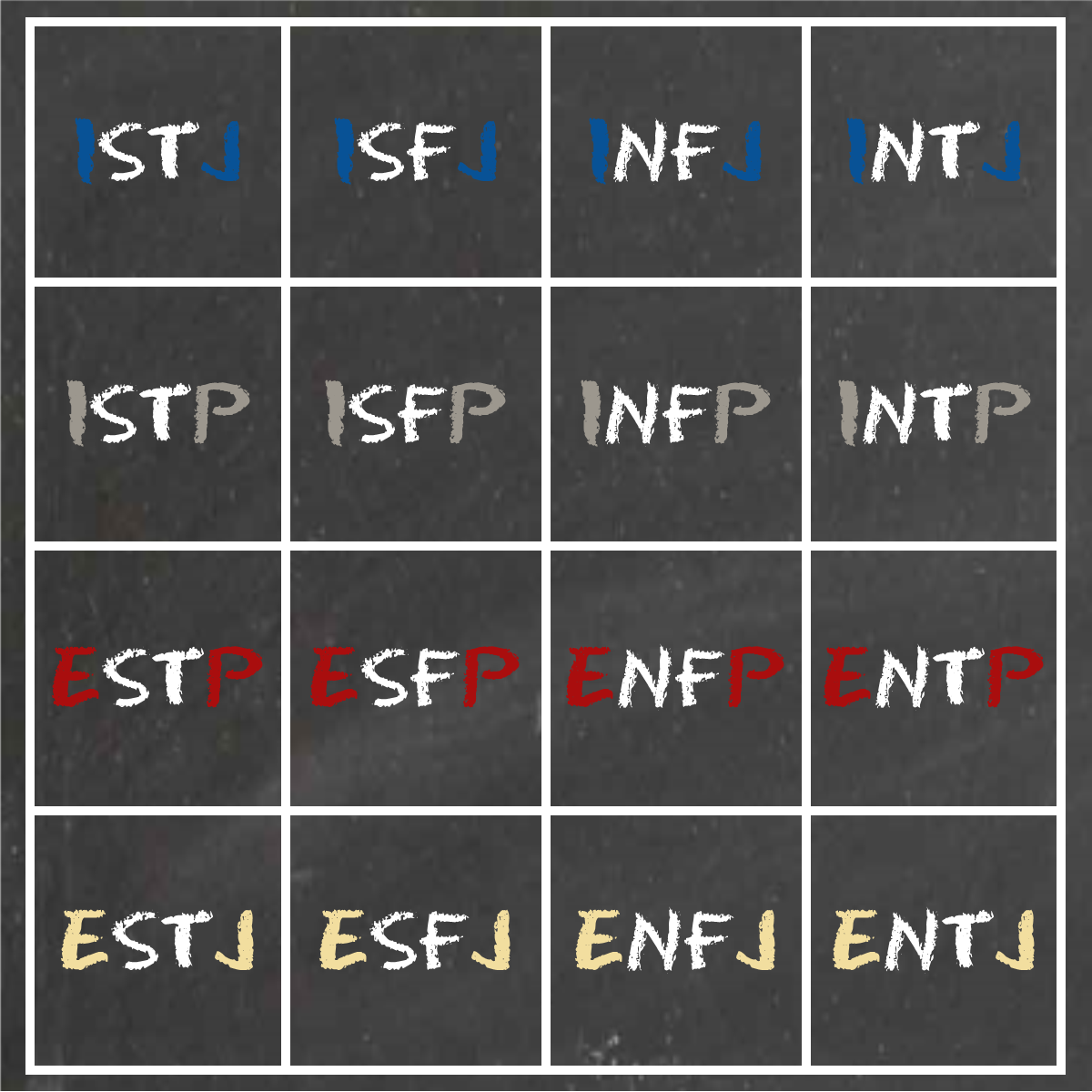
 When training individuals to interpret the Myers-Briggs Type Indicator®, I am often asked how it is possible to get to the point of being able to describe each of the types without directly reading a reference. It can be daunting to think about memorizing 16 type descriptions, and it is not the only way to approach learning about individual types.
When training individuals to interpret the Myers-Briggs Type Indicator®, I am often asked how it is possible to get to the point of being able to describe each of the types without directly reading a reference. It can be daunting to think about memorizing 16 type descriptions, and it is not the only way to approach learning about individual types.
I look at type as a language. Just as you can look at the alphabet and then look at how pairs of letters sound together, you can look at type preferences and the way they impact each other when placed in pairs and groups. This can simplify the process of learning about individual types, and it can provide deeper knowledge of the synergy of preferences. Do two preferences tone each other down or intensify each other?
The type table allows us to look at type in different ways. Here, we will be examining the columns of the type table, each of which houses all four types who share the two middle letters, or function pairs. These function pairs are considered to be the core of type, and they are a great place to begin learning about types more in depth.
STs
- Are logical and practical
- Want to know detailed expectations for completing tasks and projects up front
- Place value on having, knowing, and consistently following standard operating procedures (SOPs) for tasks that are to be repeated
- Want to know the bottom line and get things done in the most efficient, simple way possible… no fuss, no muss.
- May struggle to adjust to change that seems unneeded and/or happens quickly
- Might struggle with interaction in emotionally charged situations and considering others’ emotions
SFs
- Are people-oriented and practical
- Want to know detailed expectations for completing tasks and helping others up front
- Place value on consistency, harmony, and good relationships in their environment
- Want to help people get through their days as comfortably and with as little difficulty as possible
- May take criticism too personally
- Might avoid conflict to preserve harmony, even when conflict may improve the situation in the end
NFs
- Are people-oriented and idea-focused
- Want to know the gist of what is expected, while having room to do things in their own way, while helping others
- Place great value on genuineness, empowerment, and meaning in work and in life
- Want to help others find their passions and reach their potential, while allowing others’ voices and opinions to be heard
- May take criticism overly personally
- Might miss details and current realities while carrying out their own ideas and working towards desired change
NTs
- Are logical and idea-focused
- Want to know the gist of what is expected, while having room to design their own, logical systems and carry their visions
- Place great value on competence, expertise, and the logical soundness of ideas
- Want to critique and improve ideas and strategies, with an eye on the big picture and sound models
- May struggle to see ideas, realities, and details that do not fit with their visions, systems, and plans
- Might struggle with interaction in emotionally charged situations and taking the emotions of others into account
Once you learn about the four sets of function pairs, you will have a good, basic understanding of the cores of the 16 types. Of course, adding knowledge of type dynamics will deepen this knowledge. You can learn a bit about type dynamics by reading the article on type and stress. The next article in this series on preference pairs will discuss the attitudes, first and last letters, of type.
I hope, in reading this article, you have gained a deeper knowledge of how preferences interact. Of course, if you have the luxury, another great way to learn about types is to observe and talk with individuals who have shared their types with you. This will give you great insight on how type looks in real life. As always, I would love to hear your thoughts and ideas on this topic, and I thank you for reading!





Pingback: The Four Attitude Pairs | Personality Playbook
Pingback: Type Dynamics: Part 1 | Personality Playbook
Pingback: Type Dynamics: Basics | Personality Playbook
Pingback: Type Dynamics: Basics and Rationale | Personality Playbook
Pingback: A Comprehensive Guide to the Myers-Briggs Type Indicator » Rebel Federation - Gaming Community